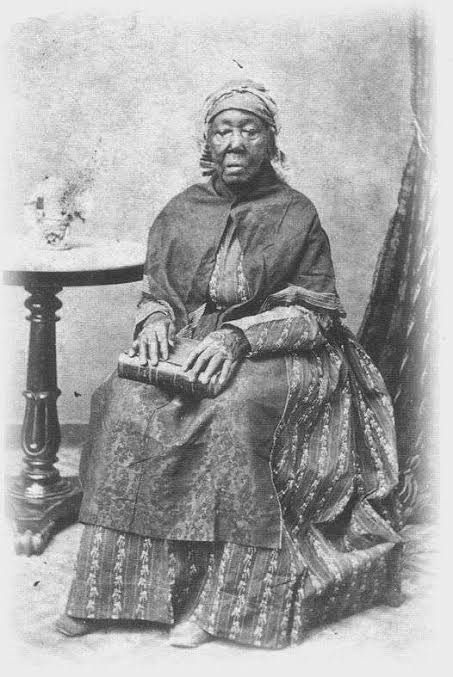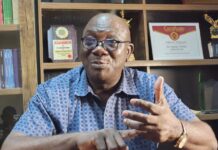From Bondage to Fortune: How enslaved African woman won freedom, wealth through love, by Gift Luckson
Nansi Wiggins (also called Ana Gallum) was a remarkable formerly enslaved woman in colonial Florida.
Who was Nansi Wiggins/Ana Gallum?
Nansi was born around 1755 in Senegal. She was kidnapped and sold into the Atlantic slave trade, she survived the Middle Passage and ended up enslaved in Florida, which was under Spanish (and at times British) control.

Her Path from Enslavement to Property Owner
Nansi was purchased by an English planter named Job (or Jacob) Wiggins. The laws governing slavery in the Spanish colonies were very different from those in the French and English colonies.
For example, it was illegal for male slave owners to have sex with their female slaves unless the woman consented. However, it was both legal and common for slave owners to marry enslaved women and set them free. Nansi quickly learned her rights under Spanish law and used them to improve her situation.
Around 1781, Job freed her, and they married in a Protestant ceremony. They had six children together, four daughters, two sons, all born free under the laws prevailing in Spanish Florida.
READ ALSO: Nigerian woman achieves historic milestone as first African to earn PhD in robotics
Nansi and Jacob were not Catholic, but they had all of their children baptised in the Catholic Church. The Catholic Church was a powerful force in Spanish society, and Nansi and Jacob understood that membership in the church would bring their children advantages later in life.
After Her Husband’s Death
Job Wiggins died in 1797. After his death, Nansi inherited his estate, which included a plantation house, 1,400 acres of land, 100 head of cattle and some enslaved people.
With the help of her eldest son, Benjamin, Nansi managed the daily affairs of her property. She began to pursue her own business interests. She appears frequently in the St. Augustine legal records, buying and selling horses and enslaved people.
Challenges, Legal Actions, Family Strategy
Using Spanish colonial law, which offered more legal flexibility than English law in some cases, Nansi was able to protect her rights and those of her children.
Sexual assault
In about 1798, she was assaulted by a man named Pedro Cassaly who came to her plantation to buy a horse. He drowned later, but the assault left her pregnant. She petitioned the court for financial support, but her petition was denied, because of her own relative wealth.
READ ALSO: Sarah Forbes Bonetta: The African slave girl who became Queen Victoria’s protégé
Children’s marriages and alliances: She married her children into free and mixed‐race families who had property or influence, which helped secure their social status.
Her son Benjamin married Nicolasa, the daughter of a prominent free Black landowner, Felipe Edimboro. Her eldest daughter, Isabella, became the mistress of Carlos Clarke, the brother of one of the most powerful government officials in St. Augustine.
Isabella and Carlos had four children together, and Carlos recognised all of the children as his own and included them in his will. These relationships solidified the Wiggins family’s social status.

Later Life & Legacy
Later in life, she moved to Fernandina (on Amelia Island) with some of her children, bought property there, and continued her social and economic activities.
The date of her death is not perfectly certain, but it is estimated that she died around 1840.
READ ALSO: Kossola/Cudjo Lewis: Significant bravery of the last survivor of slavery
Nansi’s story illustrates how enslaved African women in Spanish Florida sometimes could use the legal system, property rights, and family alliances to achieve upward mobility, though always under constraints, and not without moral, social, and ethical complications.
Controversy
Although she had once been an enslaved person, Nansi was evidently unmoved by the plight of the enslaved people she bought, sold, and employed.
In 1810, Nansi was sued by the free Black militia man Jorge Sanco. Jorge was trying to purchase the freedom of his wife, Rosa. Nansi owned Rosa and was refusing to acknowledge that the payments Rosa and Jorge had made were enough to buy Rosa’s freedom.
Spanish law guaranteed enslaved people the right to purchase their own freedom provided they could raise a sum that a government council deemed fair, so Nansi lost the case.
The case family and business interests mattered more to Nansi than securing the freedom of other women like her.
Follow the Neptune Prime channel on WhatsApp:
Do you have breaking news, interview request, opinion, suggestion, or want your event covered? Email us at neptuneprime2233@gmail.com





